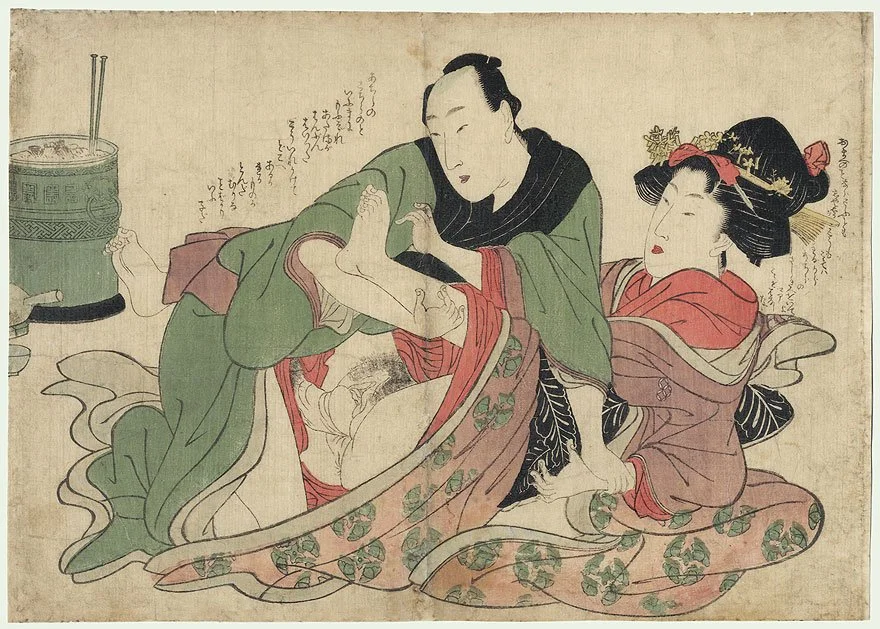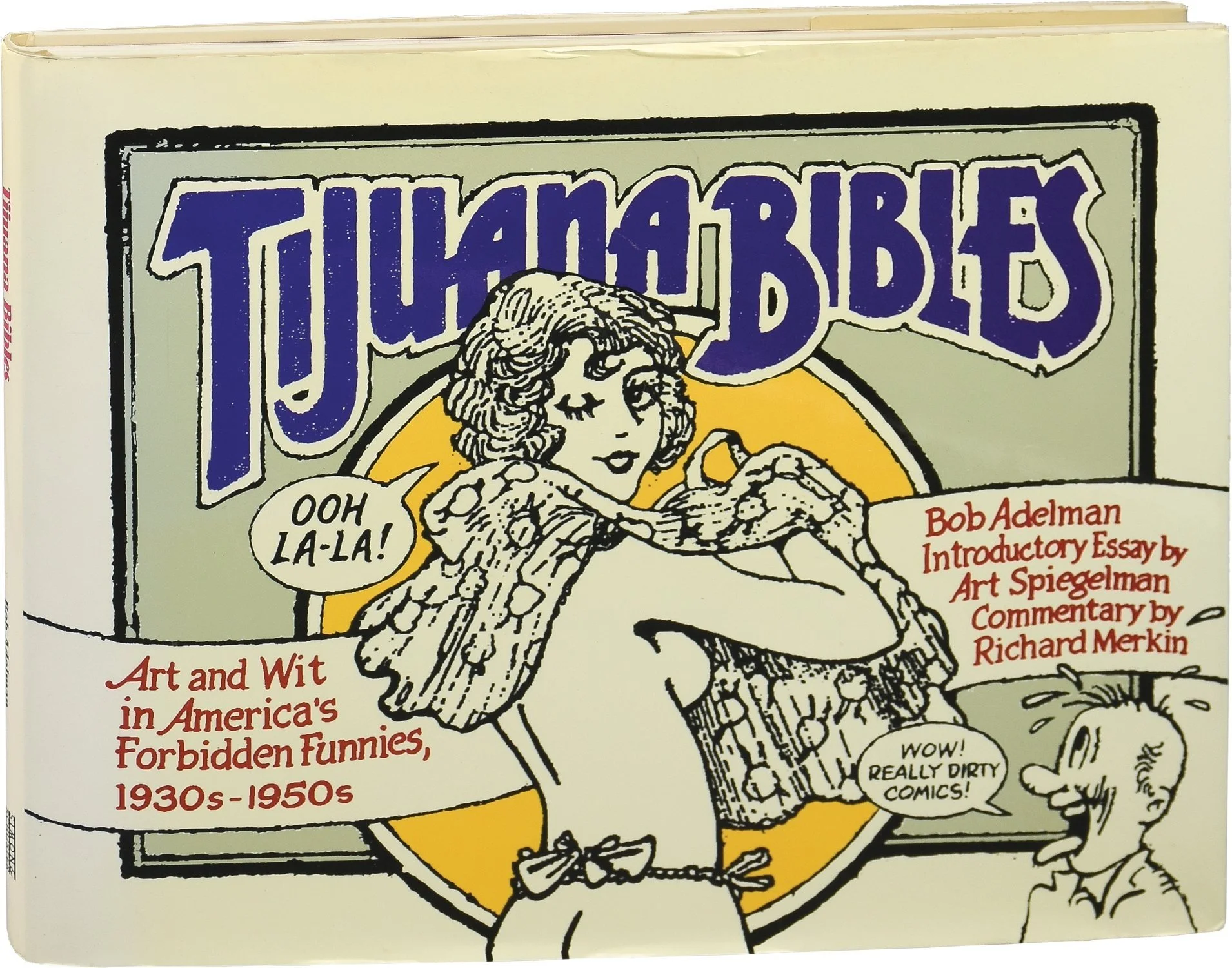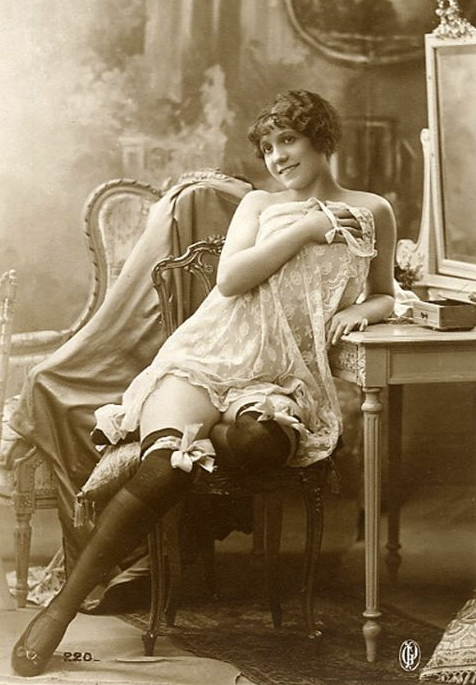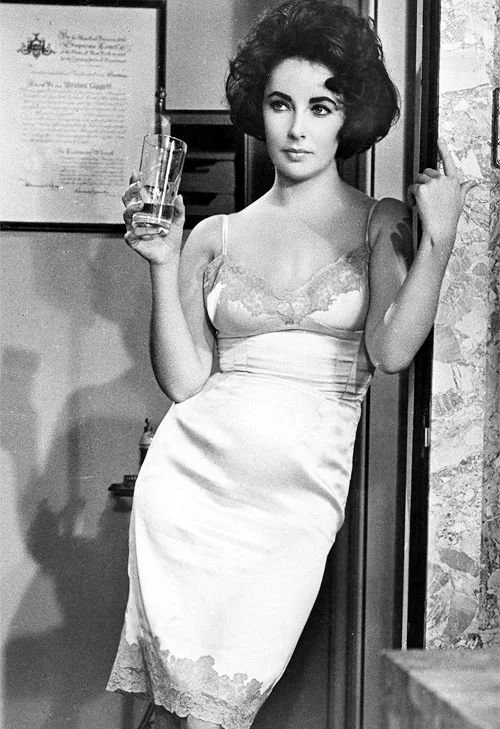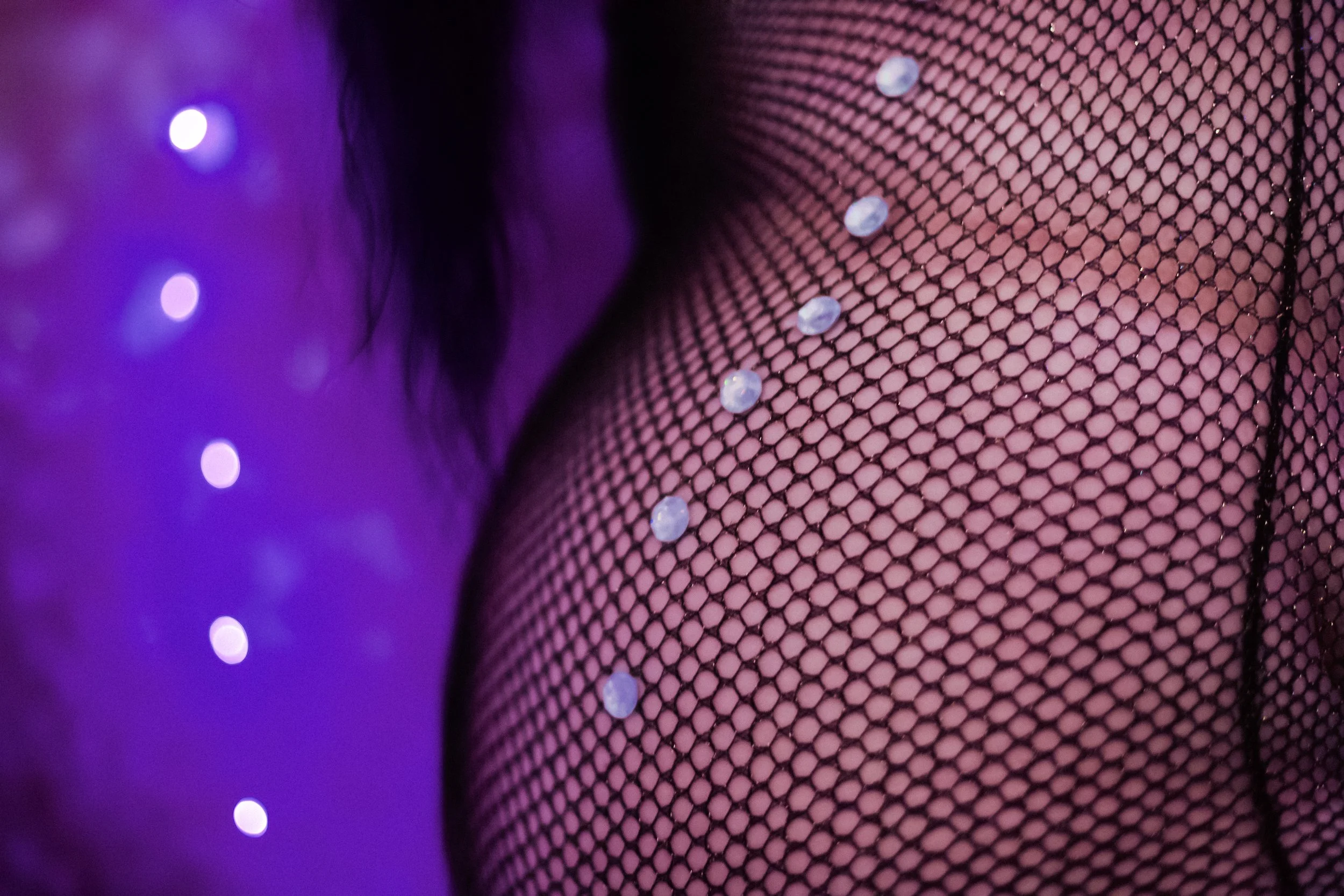A Scandalous Journey Through History
Welcome to the scandalous history of boudoir photography! In this blog, we will take a fascinating trip through time, exploring the origins and evolution of this captivating art form.
Shunga: The Erotic Art of Japan
Let's explore Shunga - the erotic art of Japan. Although many believe that Boudoir Photography History originated in France in 1890, I believe it predates the invention of the camera back to scroll times. Shunga was prevalent among the courtier class, and it consisted of narrative handscrolls depicting sexual scandals from the imperial court or the monasteries. The characters depicted in Shunga were typically limited to courtiers and monks. Shunga was highly influenced by illustrations in Chinese medicine manuals from the Muromachi era, and the notable Tang-dynasty Chinese painter Zhou Fang is also believed to have been influential.
Shunga - Erotic Japanese Art
The term "shunga" literally means "a picture of spring" or sex. It's also a contraction of "shunkyū-higi-ga," which is the Japanese pronunciation for a Chinese set of twelve scrolls depicting the twelve sexual acts that the crown prince would perform as an expression of yin yang. Shunga reached its pinnacle during the Edo period from 1603 to 1867, thanks to the woodblock printing techniques that dramatically increased its quantity and quality. However, the government repeatedly attempted to suppress shunga, including an edict issued by the Tokugawa shogunate in 1661 that banned erotic books known as "kōshokubon" or "lewdness books." Even though other genres covered by the edict were driven underground, shunga continued to be produced with little difficulty.
The Birth of Boudoir Photography
The year 1890 marked the emergence of boudoir photography as we know it today. Originating in France, the first boudoir photography albums contained highly explicit images of women in suggestive poses. These captivating pictures gained immense popularity and were even secretly sold as postcards in Parisian stores. Interestingly, during the First Franco-Dahomean War, soldiers reportedly used these postcards as a source of motivation.
The Roaring 1920s and Tijuana Bibles
Today, I’m going to talk about the 1920s After World War I, boudoir fashion became all the rage, captivating the imagination of the Flappers. Pearls, lace, and silk were all the rage in this era of boudoir photography, and the clothing was designed to accentuate the beauty of the feminine form. It was a time of sophistication, jubilation, and festivities. One of the most provocative boudoir photographers of the time was American photographer Albert Arthur Allen, whose artistic style centered around women with more voluptuous figures. Allen sold prints and was charged with sending boudoir images through interstate mail. Despite the controversy, boudoir photography continued to rise in popularity throughout the 1920s, providing women with an avenue to express their sensuality and celebrate their bodies, particularly as they had just gained the right to vote.
Tijuana Bibles, a form of underground comic that gained popularity in the 1920s. Tijuana Bibles were small, crudely drawn comic books that featured popular cartoon characters engaged in explicit sexual acts. They were sold illegally and often found their way into the hands of soldiers, college students, and other young men. The name "Tijuana Bible" comes from the belief that they were produced in Tijuana, Mexico, although they were actually created and printed in the United States. To me, it seems like classic political shaming. However, it's often the case that those who shame something in a particular culture are the ones who secretly derive the most pleasure from it. They were sold for a dime($1.80). This made them affordable for anyone who wished to purchase them, but they were often confiscated by authorities due to their controversial nature. Despite this, Tijuana Bibles served as an important cultural artifact of the 1920s, reflecting changing attitudes towards sex and sexuality while challenging traditional notions of morality. Ultimately, they paved the way for the mainstream acceptance of magazines and boudoir photography in society, and their influence can still be seen in modern-day adult comics.
Pin-up Girls and the Golden Age of Hollywood
During World War II, pin-up girls became iconic figures, adorning posters with slogans like "Come home to your girl a hero." These images showcased women with hourglass figures, inspiring young men to enlist in the war. Betty Grable was one of the most iconic pin-up girls around the start of the Second World War. Her images highlighted her long legs to encourage young men to enlist in the war. Wives also commissioned pin-up photos and drawings to motivate their husbands' safe return. The Golden Age of Hollywood played a pivotal role in boudoir photography's evolution, portraying leading ladies in glamorous yet alluring images.
Playboys and Greasers - 1950’s to 1960’s
Between the 1950s and 1960s, two iconic women emerged as boudoir icons: Marilyn Monroe and Sophia Loren. Known for their confidence and playfulness, these women brought a new level of sensuality to the screen. Around this time, Playboy magazine was launched, featuring photos of beautiful women, including Marilyn Monroe, in sensual poses. Monroe's famous 'golden dreams' photoshoot, which featured her draped in nothing but gold fabric, cemented her status as a sex symbol." Sophia Loren also made waves with her boudoir photos, showing off her curves in sultry lingerie." But it wasn't just about their looks - both women exuded confidence and sex appeal in their performances on screen. Their impact on boudoir photography and the celebration of sensuality continues to this day.
The Liberating 1970s
Perhaps the most significant change in the industry happened in the 1970s, when it became widely accepted as a professional art form. During this time, portrayals of women became more prolific yet raw, with photographers capturing the sensuality and beauty of the female form in a way that was previously taboo. And with the feminist movement in full swing, boudoir photography took on a new meaning. It became a way for women to celebrate their bodies and push back against conventional standards of beauty. French actress Brigitte Bardot was at the forefront of this movement, breaking film taboos against nudity and becoming a symbol for female empowerment and self-expression.
Girls Just Want Boudoir
In the 1980s, Sports Illustrated was among the first to embrace Boudoir Photography outside of other lewd publishing, featuring models like Christie Brinkley on the cover. Boudoir photography became more mainstream, with more magazines and photographers embracing the sensual and intimate style. By the 1990s, boudoir had become a full-blown fashion trend, with designers incorporating lingerie-inspired pieces into their collections. The trend towards promiscuity in popular culture also helped fuel the popularity of boudoir photography. Music videos and movies became more sexualized, and boudoir photography offered a way for women to embrace their sexuality and express themselves.
That’s Hot - 2000’s to 2010’s
In the early 2000s, boudoir photography gained widespread acceptance as a professional art form. As a result, other industries soon started incorporating boudoir photography into their craft. the wedding industry began offering boudoir photography as an add-on package for soon-to-wed couples. The appeal of boudoir photography lies in its ability to capture sensuality and intimacy in a tasteful and empowering way. By embracing this style, these industries helped promote body positivity and self-confidence, while also providing their clients with stunning and memorable images.
Boudoir Today and Beyond
With its ability to capture sensuality and intimacy in a tasteful and empowering way, it has found its place in various industries. From "Boo-doir" themed seasonal shoots to celebrities starting and wearing their own lingerie and shapewear, boudoir has become a mainstream phenomenon that's here to stay. One of the biggest benefits of boudoir photography is its impact on the body positivity community. By showcasing diverse body types and identities in boudoir shoots, we've seen a shift in the way people view their bodies. Boudoir can be a genuine tool to help heal your inner self and boost self-confidence, all while having a great time. As we move forward, we can expect even more innovations and creativity in the world of boudoir photography. With the rise of virtual reality technology, we may see boudoir shoots that transport us to exotic locations or allow us to embody different characters or personas. The possibilities are endless.

